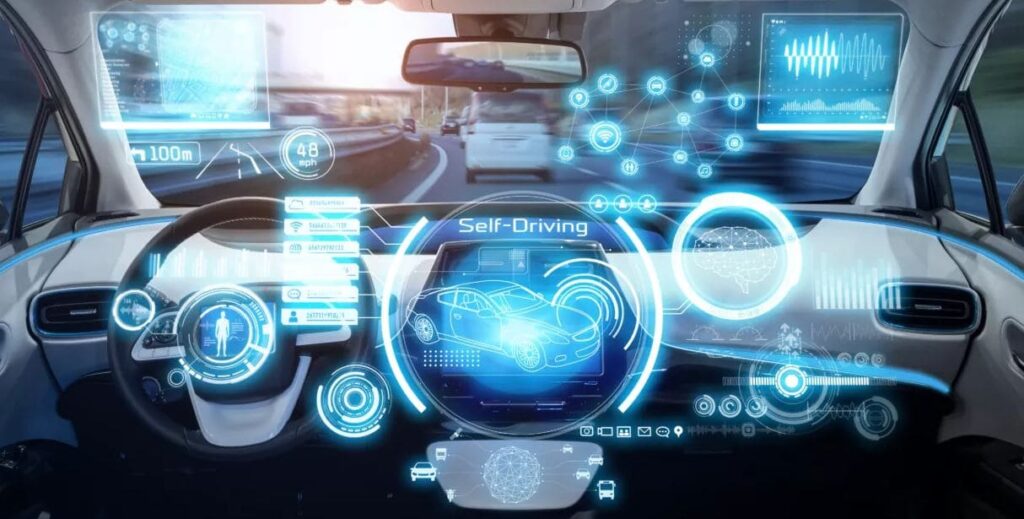Introduction
The world is adopting self-driving vehicles as an approach to revolutionizing transportation systems. Autonomous vehicles rely on real-time data analysis and installed sensors to make informed traffic decisions, increasing road safety and reducing human errors. These vehicles also share information, leading to efficiency in traffic flow as they actively adhere to the traffic rules. Although autonomous vehicles have such benefits, technological inventions have the risk of cyberattacks, which might harm car users. Self-driving cars are beneficial as they improve road safety and enhance traffic flow efficiency, despite their increased cyber-attack threats, which can be mitigated by installing convolutional neural networks (CNNs).
Improvement of Road Safety
Self-driving vehicles enhance road safety by reducing the potential occurrence of human errors and improving the safety of drivers and road users. For example, self-driving cars use a controller area network (CAN) protocol to ensure that all components are functioning and can effectively communicate for enhanced road safety (Alsaade & Al-Adhaileh, 2023, p. 2). Human factors, such as fatigue, impairment, and disruptive driving, are the leading causes of accidents that autonomous vehicles can eliminate using technological systems that analyze data and develop effective communication to avoid mistakes. Researching what is a research paper on autonomous vehicle safety can provide deeper insights. Therefore, self-driving cars contribute to safety by taking over the driving role through CANs and eliminating errors that can create increased risks for drivers and road users.

Enhanced Traffic Flow and Efficiency
Self-driving vehicles share road information and receive directions from traffic control, which leads to timely action and efficiency in adhering to existing rules. For example, the cars minimize unnecessary starts and stops, helping to develop a smooth traffic pattern by following recommended routes and maintaining optimal speeds to ensure traffic efficiency (Yu et al., 2021, p. 12). The mechanisms contributing to reduced fuel consumption for non-electric vehicles enhance the travel experience by reducing time and emissions to the atmosphere and improving transportation efficiency. Hence, self-driving vehicles contribute to improved traffic patterns and can save road users’ time due to perceived traffic efficiency.
Cyber-Attack Risks
Despite the efficiency and safety advantages, connecting self-driving vehicles to the Internet is vulnerable to cyber-attack threats. For example, hacking attempts can compromise the controls and safety of autonomous cars, leading to transportation disruption and potential road accidents (Sheehan et al., 2019, p. 523). Such attacks compromise road users’ safety through unauthorized controlled vehicle movements. However, such cyber-attacks can be mitigated by installing deep CNNs that help in improving the accuracy of self-driving cars to identify cyber-threats by mitigating false positives in the cars’ network intrusion detection (FPR) (Alsaade & Al-Adhaileh, 2023, p. 4). The installation of such systems provides key security measures against cyber-attacks. Therefore, the risk of cyber-attacks that challenge autonomous cars’ safety and efficiency can be prevented by installing CNNs.
Conclusion
In conclusion, self-driving vehicles create opportunities for improved road safety by reducing human-based errors. Real-time data analysis enables such vehicles to adjust appropriately according to traffic rules. The cars can also share and receive information from multiple traffic controls, improving traffic flow and patterns. Despite the benefits of self-driving vehicles, the potential for cyber-attacks is high due to their reliance on the Internet. Therefore, self-driving vehicles are beneficial as they reduce accidents due to human error and improve traffic flow patterns, while the problem of cyber-attacks can be avoided by installing CNNs.
References
Alsaade, F. W., & Al-Adhaileh, M. H. (2023). Cyber-attack detection for self-driving vehicle networks using deep autoencoder algorithms. Sensors, 23(8), 1–26. https://doi.org/10.3390/s23084086
Sheehan, B., Murphy, F., Mullins, M., & Ryan, C. (2019). Connected and autonomous vehicles: A cyber-risk classification framework. Transportation Research Part A: Policy and Practice, 124, 523–536. https://doi.org/10.1016/j.tra.2018.06.033
Yu, H., Jiang, R., He, Z., Zheng, Z., Li, L., Liu, R., & Chen, X. (2021). Automated vehicle-involved traffic flow studies: A survey of assumptions, models, speculations, and perspectives. Transportation Research Part C: Emerging Technologies, 127(103101), 1–22. https://doi.org/10.1016/j.trc.2021.103101


